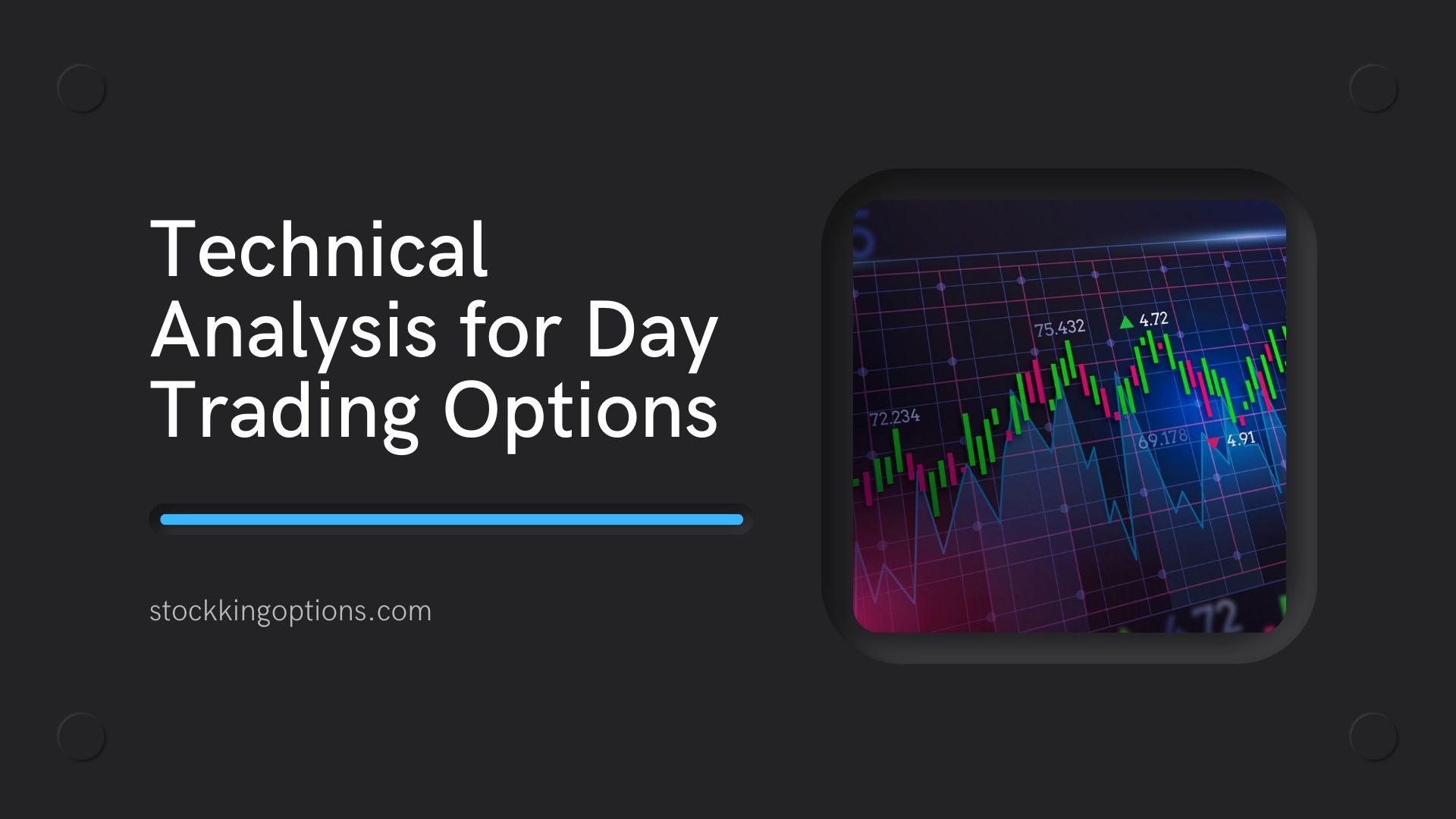
Key Takeaway: Mastering technical analysis is essential for successful day trading options. Learn to leverage candlestick patterns, indicators, and chart formations to make informed trading decisions.
In day trading options, technical analysis serves as a crucial tool for predicting price movements. By analyzing candlestick patterns, indicators, and chart formations, traders gain valuable insights into market trends and potential entry and exit points. Can technical analysis improve day trading options success rates? Absolutely. With a solid understanding of these tools, traders can enhance their decision-making process, increasing their chances of profitability.
Candlestick Patterns and Chart Formations
In the world of technical analysis, candlestick patterns and chart formations are essential tools for day trading options. These visual representations of price action allow traders to analyze market trends and make informed decisions about their trades.
Candlestick patterns are formed by a series of candlesticks on a chart, each representing a specific time period such as a day or an hour. These candlesticks display the opening, closing, high, and low price points for that time period. By understanding the different shapes and colors of these candlesticks, traders can gain insight into market sentiment and potential price movements.
One commonly used candlestick pattern is the “doji,” which occurs when the opening and closing prices are nearly equal, indicating indecision in the market. A larger doji may signal a more significant shift in market sentiment compared to a smaller one. Other popular patterns include engulfing candles, where one larger candle completely engulfs the previous one, suggesting a reversal in trend.
On top of individual candles patterns, traders also look at chart formations to identify potential opportunities for profitable trades. Chart formations refer to specific shapes or patterns formed by multiple candles over an extended period. Some well-known chart formations include head and shoulders, double tops/bottoms, triangles, and flags.
The head and shoulders formation consists of three peaks with lower highs on either side of a higher peak in the middle. This formation often indicates that an uptrend is coming to an end. On the other hand, double tops/bottoms occur when two consecutive peaks or troughs have similar high/low prices before reversing direction – signaling potential reversals in trend.
Triangles form when price ranges become narrower over time due to conflicting buyers’ and sellers’ forces until they break out in either direction – indicating possible continuation or reversal trends depending on whether it’s uptrend/downtrend line breaks first. Flags are also similarly shaped but move opposite from triangles; they represent brief periods of consolidation before the price continues in the original trend’s direction.
Candlestick patterns and chart formations are crucial aspects of technical analysis, providing traders with essential information to make informed trading decisions. While it takes time and practice to master these tools, incorporating them into your day trading options strategy can greatly improve your chances of success. So keep a watchful eye on these visual representations and use them as a valuable resource in your trading journey.
Indicators and Oscillators for Options Trading
Indicators and oscillators are essential tools for technical analysis in options trading. They help traders identify market trends, predict potential price movements, and make informed trading decisions. In this section, we will discuss the most commonly used indicators and oscillators in day trading options.
1. Moving Averages:
Moving averages are one of the most basic yet powerful indicators used by traders to analyze market trends. They provide a visual representation of the average price over a specific period, smoothing out short-term fluctuations. The two types of moving averages commonly used are Simple Moving Average (SMA) and Exponential Moving Average (EMA). SMA is calculated by summing up all prices over a certain period and dividing them by the number of periods. EMA gives more weight to recent prices, making it more responsive to recent changes in the market.
2. Relative Strength Index (RSI):
RSI is another popular oscillator used to determine whether an asset is overbought or oversold. It measures the speed and change of price movements on a scale from 0 to 100. When RSI is above 70, it indicates that the asset is overbought, and when it falls below 30, it suggests that the asset is oversold.
3. Bollinger Bands:
Bollinger Bands consist of three lines – a simple moving average, an upper band plotted two standard deviations above it, and a lower band two standard deviations below it. The width between these bands varies based on volatility; during high volatility periods, they widen while narrowing during low volatility periods. Traders use Bollinger Bands primarily to identify potential breakouts or reversals.
4. MACD:
The Moving Average Convergence Divergence (MACD) indicator combines moving averages with momentum analysis to detect trend changes early on. It consists of two lines – MACD line (the difference between shorter EMA and longer EMA) & Signal line (EMA of the MACD line). When the MACD crosses above the signal line, it indicates a bullish trend, and when it falls below, it signals a bearish trend.
5. Stochastic Oscillator:
The stochastic oscillator is based on the idea that in an uptrend, prices will typically close near their high, while in a downtrend, they will close near their low. This indicator compares an asset’s closing price to its price range over a specified period and generates two lines – %K and %D. Traders look for crossovers of these lines to determine buy or sell signals.
Technical analysis for day trading options involves using various indicators and oscillators to identify market trends and make well-informed trading decisions. It is essential to understand how each indicator works and use them in combination with other tools for more accurate analyses. It takes practice and experience to master these tools; therefore, traders should continuously educate themselves on new indicators and their applications in options trading.
Fibonacci Retracements and Extensions
Fibonacci retracements and extensions are popular tools used by technical analysts in day trading options. These indicators are based on the famous mathematical sequence discovered by Leonardo Fibonacci in the 13th century, which is believed to have a natural tendency to repeat itself in various aspects of life and the financial markets.
The golden ratio, also known as phi (φ), is a key element in the Fibonacci sequence. In technical analysis, this ratio is expressed as 61.8%, which is considered to be a significant area for potential reversals or breakouts in price movements. Other levels commonly used are 38.2% and 23.6%, which represent smaller retracements within an overall trend.
Traders use Fibonacci retracements to identify potential levels of support and resistance within a trend. This can help them make more informed decisions on when to enter or exit trades, or even where to place stop-loss orders.
To plot Fibonacci retracement levels on a chart, traders connect two points – usually swing highs and lows – and then select the relevant tool from their trading platform’s drawing tools menu. Price action will often tend to follow these levels closely, providing entry opportunities at key retracement areas.
The concept of Fibonacci extensions builds upon that of retracements but looks at projecting future price movements rather than identifying support or resistance levels. By extending the initial trendline beyond its current range, traders can anticipate potential target zones for profit-taking or even where new trends may begin.
Extensions work best when combined with other technical indicators such as oscillators or moving averages that provide additional confirmation before entering trades. This helps minimize false signals and increases the probability of successful trades.
One important point to note about both Fibonacci retracements and extensions is that they should never be relied upon alone without taking into consideration other factors such as market context, volume, news events, etc.
It’s also worth mentioning that these indicators work best in trending markets rather than in choppy or volatile price action. As with any technical analysis tool, it’s important to practice and experiment with different settings and timeframes to find what works best for each individual trader.
Fibonacci retracements and extensions are valuable tools for day trading options as they can provide key support and resistance levels as well as identify potential profit-taking or trend reversal zones. However, like all technical analysis tools, they should always be used in conjunction with other indicators and considerations to make well-informed trading decisions.




